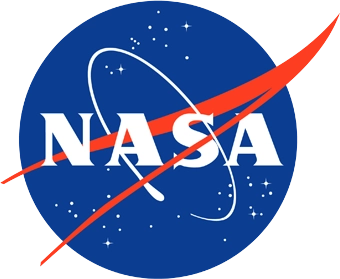2010 Significant Efforts
NASA and Partners to Demonstrate 40- and 100-Gigabit Network Technologies at SC10
NASA and a team of federal, university and vendor partners will be demonstrating significant local- and wide-area file transfers using 40- and 100-gigabit-per-second (Gbps) network technologies at SC10, the international conference on high-performance computing, networking, storage and analysis, November 15�18, 2010.
The "Using 100G Network Technology in Support of Petascale Science" demonstrations will cut across several exhibits connected to SC10's SCinet inside New Orleans' Ernest N. Morial Convention Center and to NASA's Goddard Space Flight Center (GSFC) in Greenbelt, Md. and other U.S. locations. The demonstrations are part of the SCinet Research Sandbox (SRS) featuring four large-scale networking projects.
"For supercomputing applications such as climate modeling, users need to be able to copy data files that are expanding at an ever-increasing rate," said J. Patrick (Pat) Gary, project manager for GSFC's High-End Computer Networking (HECN) Team. "A current case is the International Governmental Panel on Climate Change's Fifth Assessment Report, for which modeling centers will produce tens of petabytes of data that need to be available at multiple sites around the globe. To tackle such challenges, we are purposefully working with files as large as 128 gigabytes using a variety of file-copying applications."
The NASA team's SC10 demonstrations will feature different approaches to full-duplex 40- and 100-Gbps networking across the SRS infrastructure among the exhibits of NASA (booth # 3839), the National Oceanic and Atmospheric Administration (booth # 3639), the University of Illinois at Chicago Laboratory for Advanced Computing/Northwestern University International Center for Advanced Internet Research (booth # 3521) and the SCinet Network Operations Center (booth # 3351). These connections will be load-stressed by sets of HECN Team-built, relatively inexpensive, network-test workstations.
NASA's overall objective with these demonstrations and ongoing experiments is to determine optimal "tuning parameter" settings to obtain maximum user throughput performance. In addition to HECN, the NASA team consists of the NASA Center for Climate Simulation's Advanced Development Team from GSFC and the NASA Research and Education Network Team from Ames Research Center in Moffett Field, Ca. They are working with traditional and new or emerging disk-to-disk file-copying utilities over multi-10-Gbps and 100-Gbps wide-area networks.
"Although we have had the capability for several years now, scientists are not quite using 10-Gbps networks to their full potential, and it is going to get that much more challenging as we move towards 40 and 100 Gbps," Gary said.
The HECN Team's network-test workstations are capable of demonstrating greater than 100-Gbps uni-directional nuttcp-enabled memory-to-memory data flows, 80-Gbps aggregate-bidirectional memory-to-memory data transfers and near-40-Gbps uni-directional disk-to-disk data copies.
Several of the NASA team's SC10 demonstrations will be conducted between the StarLight exchange facility in Chicago and SC10 across 8x10-Gbps and 1x100-Gbps "for SC10 only" network pathways enabled respectively by the National LambdaRail (NLR) and Internet2, and then on to GSFC via a standing 4x10-Gbps network pathway enabled by NLR and the University of Maryland, College Park's Mid-Atlantic Crossroads.
Major contributions are also coming from the vendor partners Arista, Ciena, Cisco, ColorChip, cPacket, Extreme Networks, Fusion-io, HP and Panduit, who loaned leading-edge network and file server technologies worth approximately $5 million for the SC10 demonstrations.
More information is available at:
